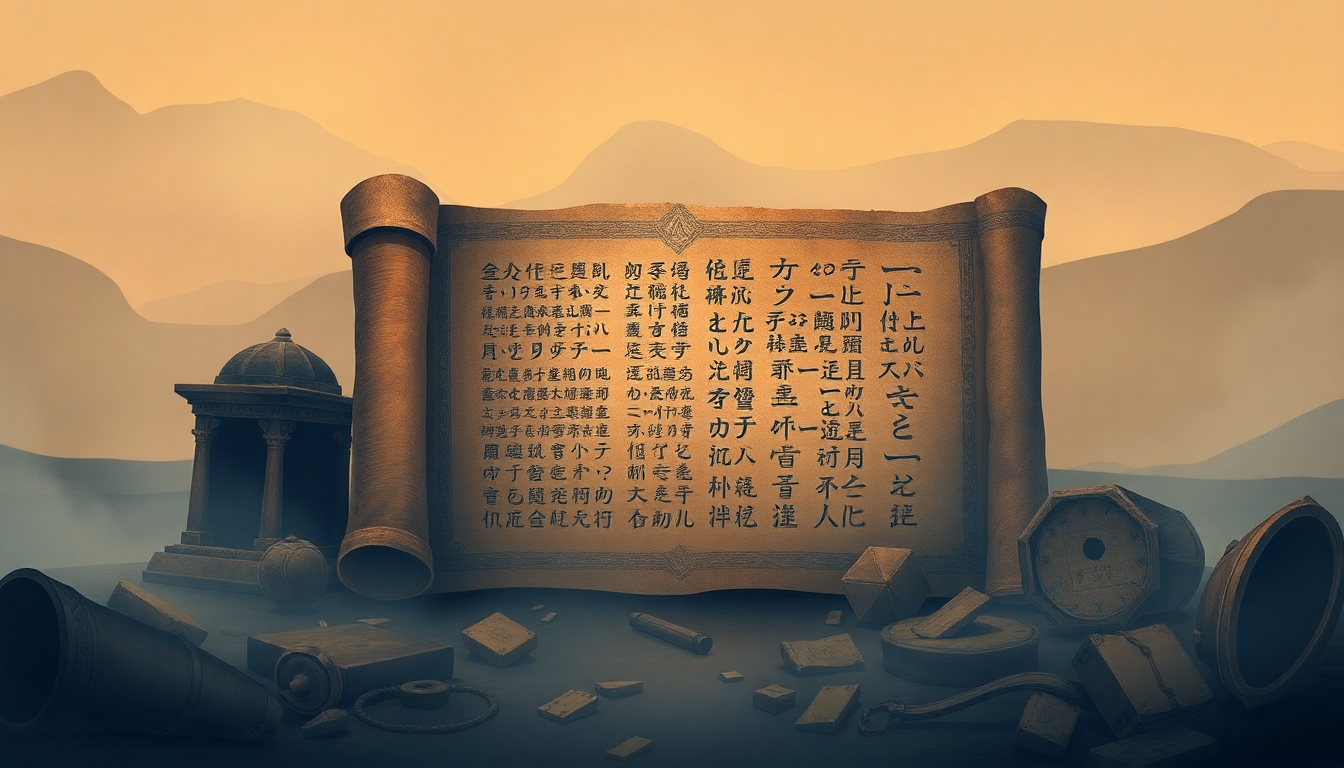Echoes of Ancient Voices: Rediscovering Lost Languages
Imagine a world where words, as we know them, are part of an intricate tapestry of symbols and signs, almost whispering stories from the past. These lost languages, or almost-forgotten scripts, are the remnants of ancient civilizations, cryptic keys that unlock who we once were. Our fascination with these scripts offers not just historical insight but also a lens through which we view our ability to communicate.
The Old Scripts: An Ancient Puzzle
Ancient scripts are not merely characters etched into stone; they are the heartbeat of civilizations long gone. Each symbol, each stroke, carries significance. Consider the case of the Indus Valley Script. This mysterious sequence of carvings from one of the world’s oldest urban cultures remains undeciphered to this day.
- Existing in the Harappan civilization, dated to over 4,000 years ago.
- Thousands of inscribed seals and pottery fragments found.
- Hypothesized to represent both language and numerical data.
Despite numerous attempts by linguists, the key to breaking the Indus script remains elusive. The absence of bilingual texts, like the Rosetta Stone for Egyptian hieroglyphs, complicates matters.
The Enigma of Rongorongo
Moving to the remote Easter Island, we find another linguistic conundrum: Rongorongo. This unique script was first discovered in the 19th century and consists of glyphs that resemble both plants and animals.
‘Deciphering Rongorongo could unravel the secrets of the islanders of Rapa Nui. It might reveal their navigational prowess or how they erected the colossal Moai statues.’ – Dr. Catherine Brinker, historian of Pacific cultures.
Despite extensive studies, no one has conclusively interpreted Rongorongo. Theories abound, but without a definitive translation, the script remains an open-ended question.
Mesoamerica’s Written Wonders
In the lush jungles of Central America, the Mayan civilization devised a script that stands as one of the most sophisticated writing systems in the ancient world. The Mayan script, which uses glyphs to represent both sounds and whole words, was largely forgotten until the mid-20th century.
- Early works by researchers like Yuri Knorozov initiated breakthroughs in deciphering the script.
- Today, scholars can read approximately 90% of Mayan texts.
- These inscriptions reveal detailed histories, calendars, and even a numerical system that included the concept of zero.
The revival of the Mayan script has provided invaluable insight into the life and culture of the ancient Maya, illuminating everything from daily activities to royal lineage.
The Scripts of Mesopotamia
Mesopotamia, the cradle of civilization, produced some of the earliest known forms of writing. The Cuneiform script developed by the Sumerians was a precursor to many systems of writing used across the ancient Near East.
- Cuneiform involved wedged-shaped marks made on clay tablets using a reed stylus.
- It spanned various languages including Sumerian, Akkadian, and Hittite.
- Thousands of these tablets have been unearthed, detailing everything from trade transactions to epic literature like the Gilgamesh epic.
Deciphering cuneiform was a herculean task, solved in part thanks to the trilingual Behistun Inscription. This rock relief, dating back to the 5th century BCE, helped scholars crack the script, similarly to the way the Rosetta Stone assisted with Egyptian hieroglyphs.
The Linguists’ Toolbox
To unravel the mysteries of ancient scripts, linguists employ a variety of techniques. These range from statistical analyses to advanced imaging technology that uncovers details invisible to the naked eye. One remarkable method is the use of AI and machine learning:
‘By training algorithms on known languages, researchers hope to recognize patterns that can be applied to lost scripts, potentially offering new breakthroughs in our understanding.’ – Dr. Asha Patel, computational linguist.
Such digital tools augment traditional approaches, blending art with science in the quest to decode the past.
Why It Matters
Rediscovering lost languages is not merely an academic exercise. These scripts are ancient records of thought, illuminating our shared human heritage. They offer perspectives on societal norms, religious beliefs, and scientific advancements of bygone eras.
Moreover, engaging with these ancient writings fosters a sense of wonder and curiosity. It reminds us of the incredible breadth of human ingenuity and the perpetual quest for knowledge.
In the end, lost languages are more than a forgotten past; they are bridges that connect us to the tapestry of human existence. As we continue to decode these ancient scripts, we gain not just knowledge but a deeper appreciation for the diverse ways in which humanity has expressed itself through time.
